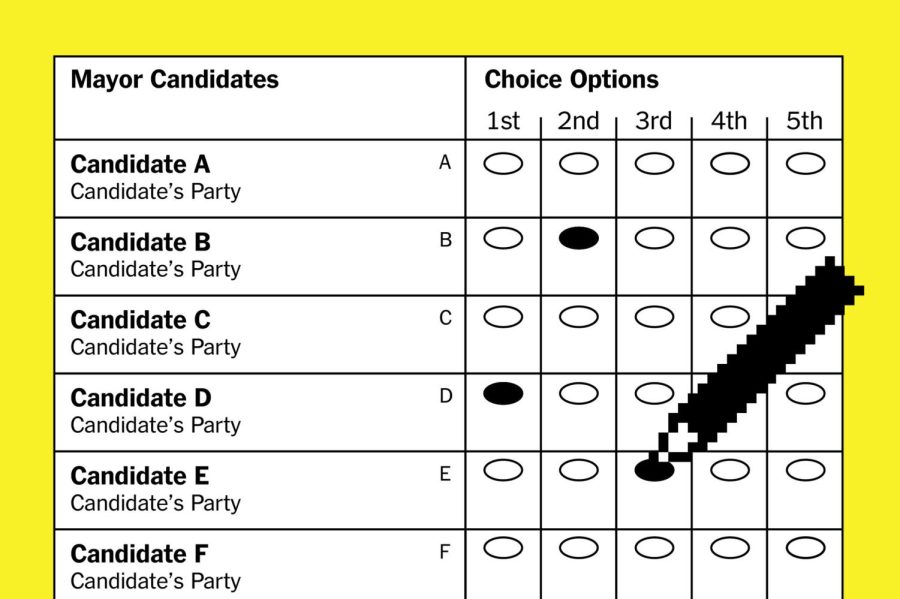Ranked choice voting: There are alternatives
April 3, 2023
With election races getting closer and politics becoming increasingly divisive, American voters of all beliefs feel extremely misunderstood by their representatives. It is an unspoken rule that only Democrats and Republicans will win elections, and political parties are becoming vacuums of discussion, without room for diversifying opinions and perspectives. Americans seem to be asking an important question–are there alternatives to fruitless, unsurprising elections?
One option could be changing the way we elect our representatives. Other than the Electoral College, the majority of electoral processes in the United States use a popular single-choice voting system, in which voters only vote for one candidate. If your candidate does not have the majority of voters, your vote is thrown away, without consideration for any other opinions you might have on other candidates. Doesn’t this seem odd?
Ranked choice voting, also known as instant-runoff voting or preferential voting, is a voting system that allows voters to rank candidates in order of preference. In a ranked choice voting system, if no candidate receives a majority of first-choice votes, the candidate with the fewest votes is eliminated, and their votes are redistributed to the voters’ second choice candidates. This process is repeated until one candidate receives a majority of the votes. By allowing voters to rank candidates in order of preference, ranked choice voting can ensure that the winner has the support of the majority of all voters.

Ranked choice voting encourages candidates to attract a diverse range of voters, rather than their usual party base. Third party candidates also have a better chance for recognition in this system, as voting for these candidates are not “throwing away” votes in comparison to this choice in the current popular vote system the United States. When you can only vote for one candidate, and not give your opinion on others, elections are guaranteed to be won by a Democratic or Republican party nominee. With rank choice voting, you may state with your vote that the third party candidate is your first choice, but if this minority does not win, you may also choose a majority candidate. In our current electoral system, your opinion is completely thrown away if your first choice does not win.
Some parts of the United States have chosen ranked choice voting for elections, such as Alaska establishing this system for general elections in 2020, and Virginia enacting this electoral system for local elections in this same year. In 2023, at least 14 states will be considering ranked choice voting as their method of electing representatives.
Ranked choice voting is a system that gives voters larger control over the nomination and election process. Candidates are incentivized to appeal to a wider range of voters rather than limit themselves to a vacuum of certain voters. With the current polarization of two-party politics in the United States, forcing candidates to appeal to varied voters deconstructs this extreme bipartisan nature of our country, and opens up more discussion and diversity of opinion in mainstream politics.



